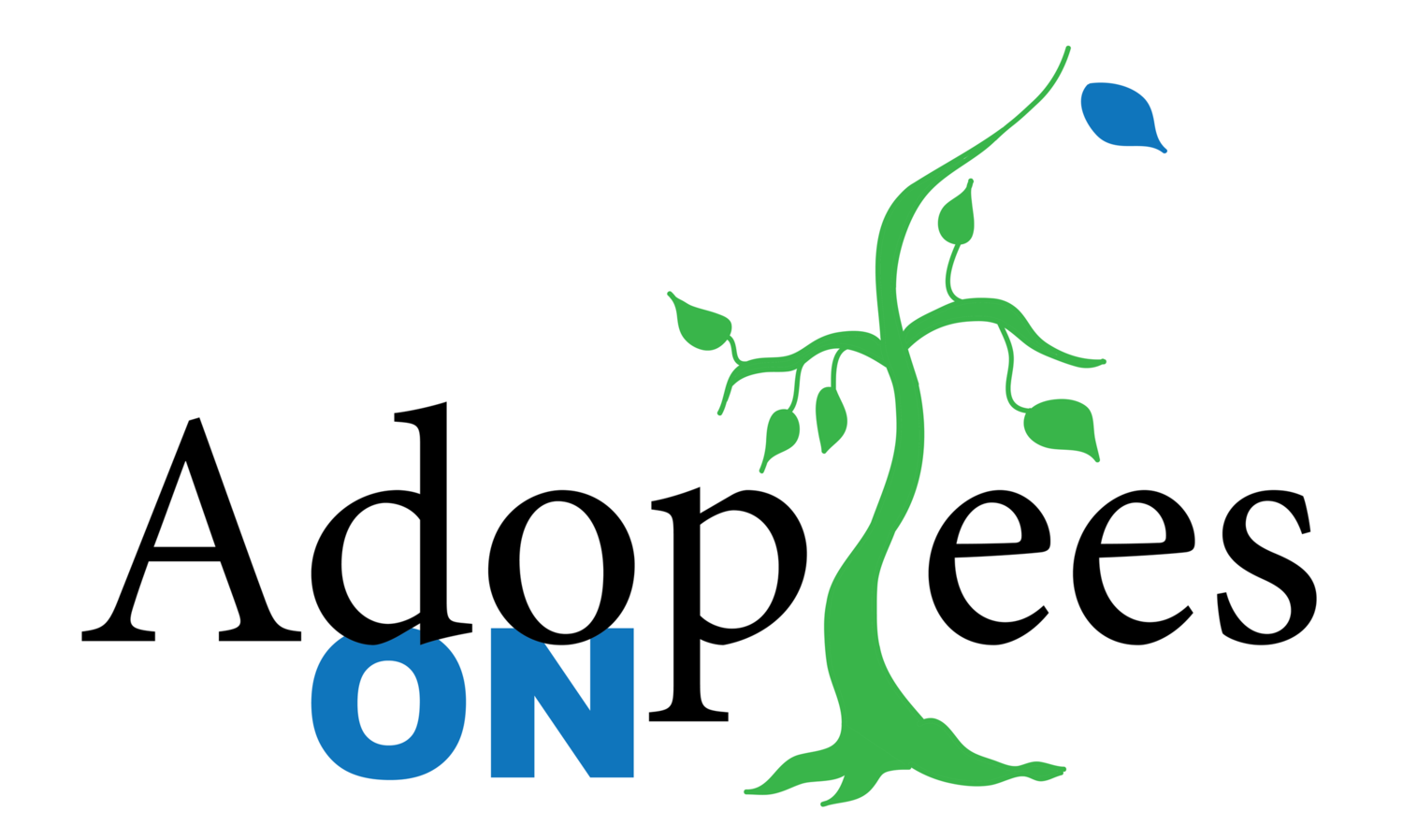Healing Generational Trauma with Pam Cordano, MFT
/Interviewees: Pam Cordano, MFT, Lauren Cordano, Sarah Cordano - Interviewer: Haley Radke - Author: Shantu Ellis
We learn from the people around us, for better or worse. From birth, healthy social and emotional development is rooted in the bonds we form with our caregivers. It’s the basis of attachment theory—which is WAY more complicated than I’m making it seem.
In his book Mindsight, psychologist Daniel J. Siegel points out that, “Attachment patterns are one of the few dimensions of human life that appear to be largely independent of genetic influence.” That can be a comforting thought. It suggests that the struggles many Adoptees face in forming healthy relationships are taught. It also means that—with the right amount of care, support, and attention—those wounds can be healed and we can develop healthy attachments.
Pam Cordano’s trauma was intergenerational, as she revealed in Adoptees On episode #85: When Your Mother Is an Adoptee. Her great-grandmother relinquished her grandmother, who relinquished her mother, who relinquished her. That much separation comes with residual side effects, which became evident when Pam had her own children. “Becoming a parent opened Pandora's box in a bigger way to my trauma,” she said. “To keep a baby when you haven’t been kept is new territory.”
Pam had a short-lived reunion with both of her biological parents in her mid-20s, shortly after her first daughter, Lauren, was born. She’d broken the familial cycle of abandonment, but as time went on her “flee” response was still very overwhelming.
“Disconnection is the easy way and holding on is the hard way,” Pam admits. “There was something heroic about trying to stay in a relationship, for me. I could have just left the house and gone to a hotel. That’s what the cells in my body wanted to do. So, fighting for a way to connect and see each other’s side, for me, was the hard road.”
There’s a lot of unraveling that comes when Adoptees realize our traumas, uncover our true selves, and analyze the narratives under which we’re raised. Unhealthy attachment patterns make the process harder, as they can be very deep-seated and subconsciously affect other areas of relationships. “It would have completely devastated me to fail at maintaining a relationship with my kids,” she said.
Addressing generational trauma
Pam unpacked her own childhood trauma as she raised Lauren and her youngest daughter, Sarah, with their dad. It’s a situation that’s very relatable. Taking on the responsibility of guiding our children while trying to heal ourselves leads to some very creative parenting practices. Many Adoptees say they sense a “shift” in their mindsets with the birth of their own children.
“Before I had kids, I could escape from my feelings more easily but once I had babies, I felt like I had to get more serious and careful and protect them,” she said. “I wanted to be a perfect mother and give them everything that I had never gotten from my biological family or my adoptive family.”
But Pam’s plan backfired. Lauren says she attuned to Pam’s emotions very early. “It was really hard for me to distinguish, ‘who am I?’ vs. ‘who is my mom?’” she said. I felt so connected to her and I think part of the reason for that is because she was adopted and I was the first blood relative that she had in her life. I think there was a strong clinging action that happened between us because of that.”
Pam’s attunement to the fragility of relationships was not lost on Lauren. “I think that my mom had a really acute awareness of where relationships and connecting and bonds can fail before she even entered motherhood,” she said. “Moving through the different stages of parenting, knowing where abandonment or pain or wounds or trauma can happen, is unique.”
Sarah, Pam’s youngest daughter, says she was not as emotionally intertwined with her mom as Lauren was. “I would easily pick up on emotions that she had,” Sarah said. “If she was really overwhelmed, I could feel that and I would replicate it.”
Encourage open communication
Sarah, Lauren, and Pam agree that communicating was vital to their relationship. Family therapy was normalized in their routine very early on. They held regular “family meetings” that would often evolve into tears, arguments, outbursts, breakdowns, and admissions.
“They weren’t fun,” Lauren admitted, remembering the family meetings which could last up to five hours and be drenched in emotion and honesty. “In the back of my mind, I knew that it was an act of love and really, one of the purest acts of love that I can think of in a family. So I really tried to soak that up.”
Lauren said that she now sees how the time with her family—as difficult as it often was—has helped them heal. It’s allowed them to identify past traumas in order to prevent them from affecting future generations. “That is one of the best gifts I can think of. Having to do that on your own, and finding those resources out in the world, is really hard. To have the support of people you know around you is really valuable to me now.”
If the attachment is learned, it has the potential to be healed. Thanks largely to the family meetings, Sarah says that communication among the family is easier and when there is a conflict, it doesn’t last long, which are great indicators of healthy relationships and genuine healing.
Validate individual personalities
Individuality is essential to self-identity. The freedom to think and express with autonomy helps us understand our own selves—at work, in social circles, and within our own families. Unfortunately, when we’re raising children and have unaddressed attachment complications, our own residual hang-ups can spill over to our kids.
Sarah and Lauren agree that there was a time when their mom’s struggles overshadowed some of their own needs. Lauren says it wasn’t until she went to college that she realized how unhealthy the attachment they’d formed was, and began detangling their relationship and realizing her own identity.
Sarah had a very different experience. By her mid-teens, she says she was actively pushing against her mom’s attachment style, and the two butted heads quite a bit. Their relationship was much louder—more aggressive—than the one Pam had with Lauren.
“We would have some pretty bad fights, and I would say things like, ‘I hate you,’ and ‘you’re a bad mom,’” Sarah admits. Learning to consider her mother’s emotions was a practice that eventually allowed for healthier communication. “I didn’t understand how much that could affect my mom. It didn’t matter how many times she told me that she was adopted; I just didn’t get it in my head how that was her biggest fear in parenting.”
Sarah said she felt emotionally conflicted at times. The belief that our loved ones—even our children—will leave is well-documented among Adoptees, but it can be foreign to non-adopted people. “There’s a disconnect,” Sarah said. “I wasn’t adopted. I think my bond with my mom is invincible and we can get into horrible fights and I can say horrible things and it’ll be okay, but for her, when she was triggered, that was not where she was.”
“The belief that our loved ones—even our children—will leave is well-documented among Adoptees, but it can be foreign to non-adopted people.”
Pam admits that communication with her kids has exposed some vulnerabilities over time. “If Sarah or Lauren would say, ‘I hate you,’ or ‘I wish I had a different mother,’ that was the death of me,” she said. “It was the worst thing they could possibly say. To me, it was real, and I would go right down the rabbit hole and feel like I was worthless.” Eventually, Pam learned to separate her personality from those of her kids, thanks to family therapy, “family meetings,” and distance.
Allow space for each other
When people feel free to act as their individual selves within healthy relationships, they gain more opportunities to communicate; when they communicate openly in a healthy environment, they feel freer. Pam, Sarah, and Lauren have been sharpening their communication skills for years. They’re not simply listening to each other at this point; they’re hearing each other—giving space to feel and process each other’s thoughts and emotions, attuning to each other’s body language and needs.
Sarah says that mindfulness, stepping away from the arguments, and focusing on the positives helped her identify her mother’s needs. This gave them both the space to attune and become advocates for each other. “Take a minute and remember who you’re fighting with and how much you love them,” Sarah says. “Give them some space to also have pain, even though your pain is so big too.”
Lauren agrees and says that feeling free to communicate without threatening the relationship gives them room to focus on themselves and, ultimately, each other. “My relationship with my mom feels so much better to me now,” she says. “Before, it might have been really perceived as scary to both of us. I had to own my own identity and my mom had to lose what she perceived as this super-close ally.”
Lauren adds that the journey wasn’t easy—in fact, it was quite scary at times. But coming out on the other side with a strong familial bond is worth the struggle. “My mom can relate to me from a place of knowing who I am and who she is. We’re adjacent to each other, instead of on top of each other.”
It’s better on the other side
“I don’t hate myself, the way I used to, as a mother,” Pam says. She's grown to have compassion for her parenting missteps—past, present, and future. “What’s more important than mistakes that parents make is that they repair the mistakes. That’s what really informs the kids and the parents of who they are and what’s going on. Repair is huge.”
The severity in which adoption-related trauma impacts our everyday lives can be difficult for non-adopted people to understand. Some say it’s impossible. Normalizing the conversation and centering it on the Adoptee is a great first step, but kids still need their parents to be mentally and emotionally healthy, whether those parents were adopted or not.
“I think it’s hard for adopted parents to understand how strong their bond is with their child, from the child’s perspective,” Lauren says. “My mom is my life-giver. That bond is permanent and our relationship is never at risk in my mind.” She says that the paradigm shifted when she realized that bond was not necessarily unbreakable in her mother’s mind. “I would almost describe it as culture shock. I just don’t understand where she’s coming from because, to me, she’s forever.”
Through adoption-competent therapists, open communication, and respecting their own individuality, Pam and her family have found a way to break through generational trauma and manage their different attachment styles.
Sarah says she now sees the whole picture much clearer and is much more comfortable sharing her emotions. “There’s hope,” she says. “Even if you’re an Adoptee and you have a really fiery relationship with your kid. I did with my mom, for a long time, and I love my mom to pieces. I wouldn’t change one thing about our relationship at this point.”

















